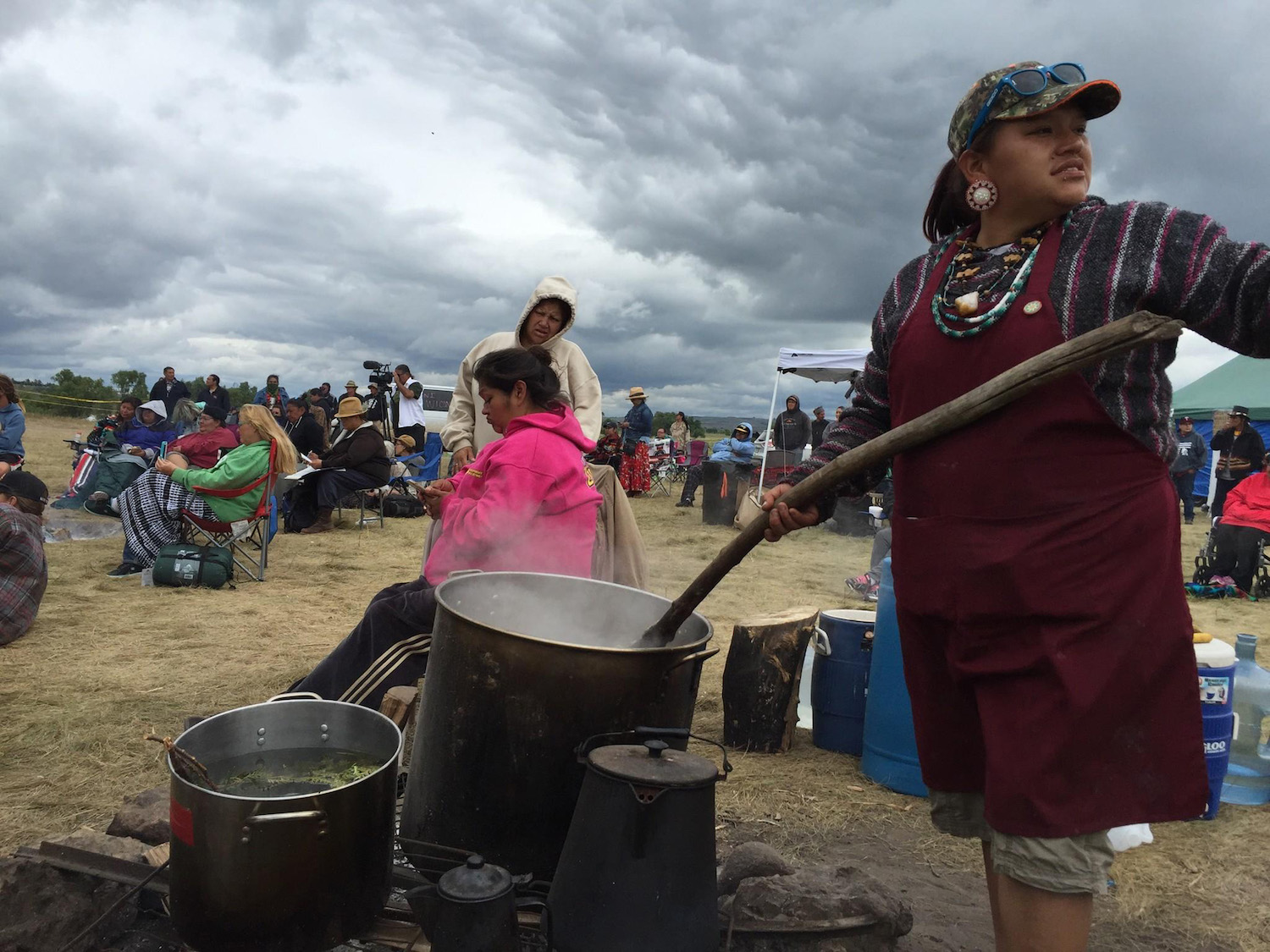Throughout history, the U.S. Army was used by the government to keep the American Indians from leaving the reservations assigned to them — which at the time were believed to be devoid of any natural resources.
Fast forward to 2016, and the tribe living on the Standing Rock Sioux reservation in rural North Dakota is protesting the 1,172-mile Dakota Access oil pipeline.
The pipeline threatens their sole water source, the Missouri river, which provides drinking water for millions of Americans and irrigation water for thousands of acres of farming lands.
However, it goes beyond the importance of water — the pipeline would run through sacred burial grounds, according to Standing Rock Sioux Tribal Chairman Dace Archaumbault II.
“These grounds are the resting places of our ancestors. The ancient cairns and stone prayer rings there cannot be replaced. In one day, our sacred land has been turned into hollow ground,” Archaumbault said after bulldozing took place on the reservation.
Sites like the Standing Rock Sioux reservation must be left undisturbed by capitalist forces, if not — the footprint that the Sioux nation has left would be wiped out by an encroaching force.
Who is behind the $3 billion dollar project? Texas oil company, Energy Transfer Partners and get this — the U.S. Army Corps of Engineers — the same army that once forced Indians to live on bleak reservations.
Ironically — these lands, which money moguls once deemed useless, turned out to be essential for the transportation of hydrocarbons necessary to create fuel.
The protests proved to be iconic —– with protesters, many who referred to themselves as water protectors, setting up teepees at the protest site and American Indians on horseback.
The coming together of American Indians from throughout the nation proves that the indigenous population stands united — and their voices refuse to go unheard. Last week, the Justice Department asked ETP to “voluntarily pause” the project.
This temporary halt in construction is more significant than most Americans might acknowledge it to be. The federal government is finally beginning to pay attention to the avid claims that the American Indians have been making for hundreds of years. The kind exclaiming about the environment being destroyed by money-hungry corporations— while their culture is being taken down with it.
Nonetheless, a “voluntary pause” is exactly that — a pause — while ETP figures out how to go about the construction and eliminating its biggest hindrance — ardent American Indians demanding justice.
“This is a momentary victory,” one American Indian protester said in a video posted on the Sacred Stone spirit camp Facebook page.
“It’s not a win,” he said, “but it demonstrates that we are winning, that we remain vigilant, cautious and prepared to put our bodies on the line in defense of Mother Earth and the protection of our rights as indigenous peoples to stop the Dakota Access Pipeline.”
If older generations of the U.S. Army took the land of the American Indians — then this era of Army Corps members are making it simple for an oil company to pollute and wreck what little is left for those who live on the reservation.
According to an article for Politico by Sarah Wheaton titled, “Obama’s fragile climate legacy,” — President Barack Obama would like to be remembered as the president who saved the world from climate change.
However, if the Obama administration fails to stop the transferring of what would be 500,000 barrels of raw oil through the pipeline per day, then the climate change dilemma would worsen.
The United States is already home to more than 2.5 million miles of oil pipelines crossing the country in every direction. Developers believed that the construction of the Dakota Access Pipeline would be a nonevent.
That was until tribal members of the Standing Rock Sioux reservation decided to stand up for their land and protest the construction of the pipeline.
The possibility that the Obama administration does not allow the construction of the pipeline is real — we’ve seen it before when the construction of the Keystone XL pipeline was stopped through government intervention.
American Indians were the first people to witness what white colonizers did to a continent after taking complete control of it — the U.S. government should take into account that the indigenous population knows what they’re protesting for.
It’s a sad realization, but the same story — the Native people are passionately trying to save the environment while the colonizer is looking for new ways to damage it.




